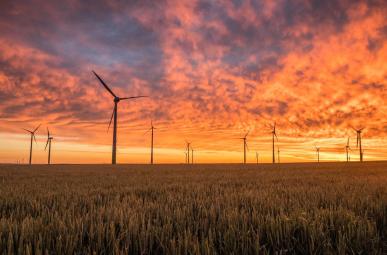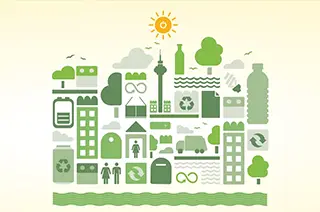

What is the future of renewable energies in Spain?

42% of all the energy produced in Spain comes from renewable energy sources, therefore in "Genera" sustainability, innovation and business are the strategic pillars to offer companies and professionals a platform for commercial contact and knowledge The development of the use and obtaining of renewable energies has great protagonism nowadays. IFEMA offers in "GENERA" a wide vision for the development of this sector, with sustainability, innovation and business as strategic pillars to create a platform for commercial contact and knowledge.
Spain has made a strong commitment to energy transition in the last year. The decarbonization of the industrial sector, as well as the proliferation of the use of renewable energies, is a challenge for the great professionals who operate within the national territory
The main objective of the energy transition is the decarbonization of the economy and the adaptation and development of a strategic model that is more responsible with the environment, through the promotion and research of the renewable energies of the future. Spain has set itself an ambitious goal: by 2030, 42% of the energy produced in the country must come from renewable energy sources. A project included in the National Integrated Energy and Climate Plan (PINEC) 2021-2030. In short, it is the state's contribution to the European commitment signed in the Paris Agreement of 2016, which establishes measures for the reduction of greenhouse gas emissions
The country has sufficient resources to carry out an effective energy transition, although it is true that in some mining communities, such as Asturias, whose economy is based on coal extraction, this initiative must be carried out in a careful and studied way, since it is a total change of the current economic model.
What types of renewable energy stand out in Spain?
Due to its geography, Spain has three strengths to develop the renewable energies of the future. From areas of high mountains and long stretches of plateau, where the wind can supply electricity to several towns, to places where the sun shines almost all year round, or powerful rivers from which to extract electricity. For all these reasons, three clean models are established that can become the basis for obtaining energy and the pillar of a new economic model that cares for the environment.
Wind energy: When travelling by road within the national territory it is not strange to find (and more often) gigantic windmills that form huge wind farms and use the wind to generate electricity. Wind energy has been established in the country for many years, but it is now, thanks to the measures of PINEC, that it is experiencing its true boom. Its operation is also relatively simple: wind energy is obtained by converting the movement of the blades of the wind turbine into electrical energy. This energy then travels to a distribution substation which finally delivers the electricity to the user. Currently, all the autonomous regions, except Madrid, have a wind farm. With 23,484 MW of accumulated power, "wind energy in Spain has been the second source of generation in 2018. Spain is the fifth largest country in the world in terms of installed wind power capacity, after China, the United States, Germany and India", as stated by the Spanish Wind Energy Association (AEE).
Cogeneration: This is probably the most unfamiliar term to most citizens. Cogeneration is defined as the joint production, in a sequential process, of mechanical and/or electrical energy and useful thermal energy, i.e. the simultaneous production of two or more types of energy. A cogeneration plant usually consists of reciprocating engines, gas or steam turbines, which transform the energy contained in the fuel into mechanical energy and waste or exhaust heat. The mechanical energy is usually transformed into electrical energy through an alternator (this is the most common case), and the waste heat can be recovered in the form of water vapour, hot water, thermal oils and hot gases, as heat-carrying fluids and arranged for their thermal applications, explain the Institute for Energy Diversification and Saving (IDAE), a public business entity attached to the Ministry for Ecological Transition, through the State Secretariat for Energy.
Solar energy: Spain is a country of sunshine, especially in the southern half of the country. That is why solar energy is a safe bet within the framework of renewable energies of the future. Photovoltaic solar energy takes advantage of solar radiation by transforming it directly into electrical energy, through the photovoltaic effect, which consists of the emission of electrons by a material when it is illuminated with electromagnetic radiation (in this case solar radiation). "Spain has a large potential for the development of solar thermal energy, with an average of 2,500 hours of sunshine guaranteed per year. The low cloudiness, low environmental humidity, dry climate and the incidence of solar rays mean that our country obtains enviable direct radiation values", states the latest report prepared by the IDAE.
Due to its commitment and support to social responsibility and the development of renewable energies in Spain, IFEMA organizes annually "GENERA", the International Energy and Environment Fair. A unique meeting point where professionals from the sector debate and analyse the future of renewable energies, and establish important business relationships.
Sustainability, Innovation and Business are the pillars of the next edition of GENERA, to be held from 5 to 7 February 2020 at Feria de Madrid, organized by IFEMA with the collaboration of IDEA. A platform for commercial contact and dissemination of knowledge about all those trends, developments and technologies that mark the evolution of the industrial sector of renewable energy, distribution, energy efficiency and its main applications, such as storage, self-consumption and mobility.















